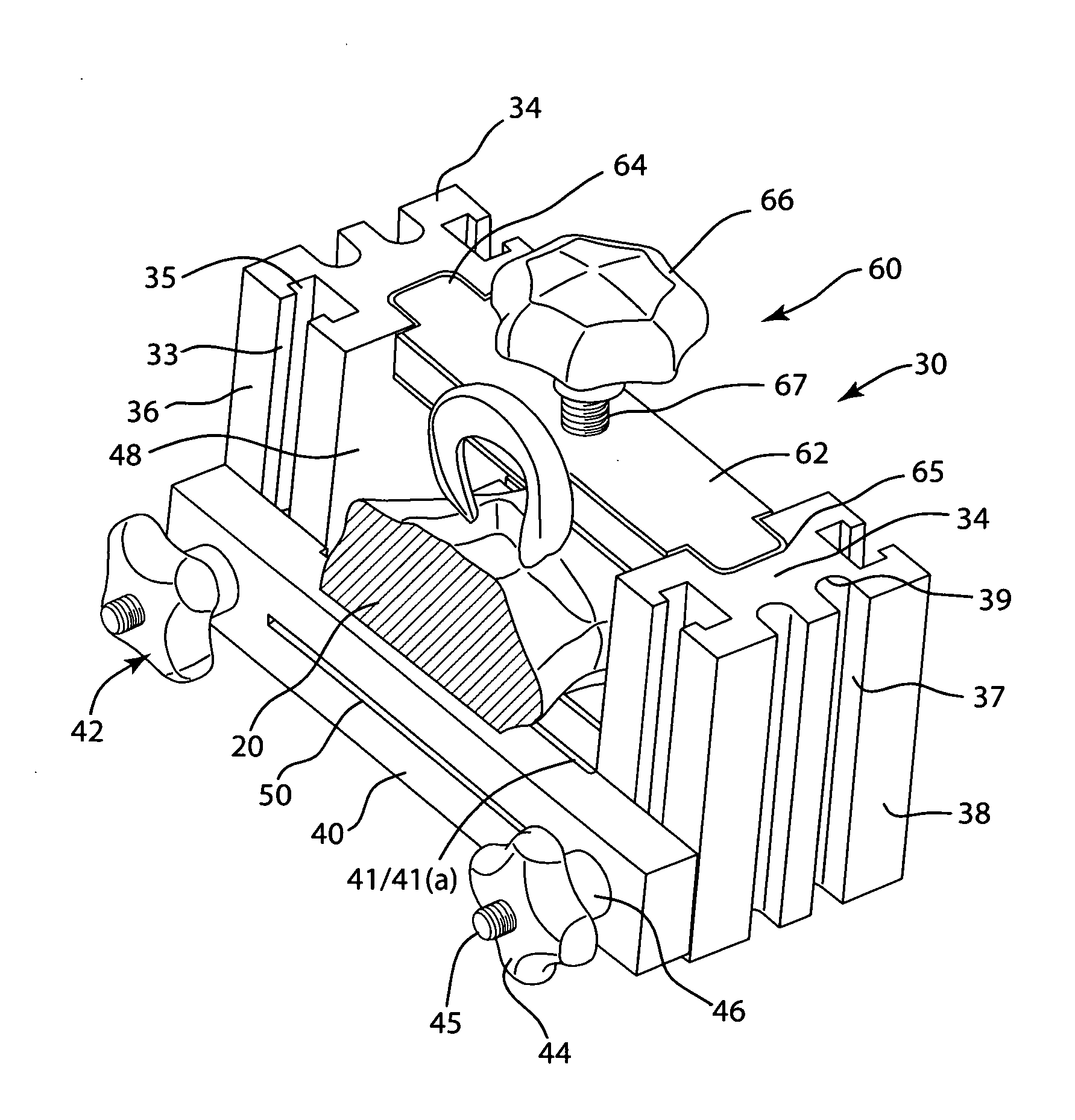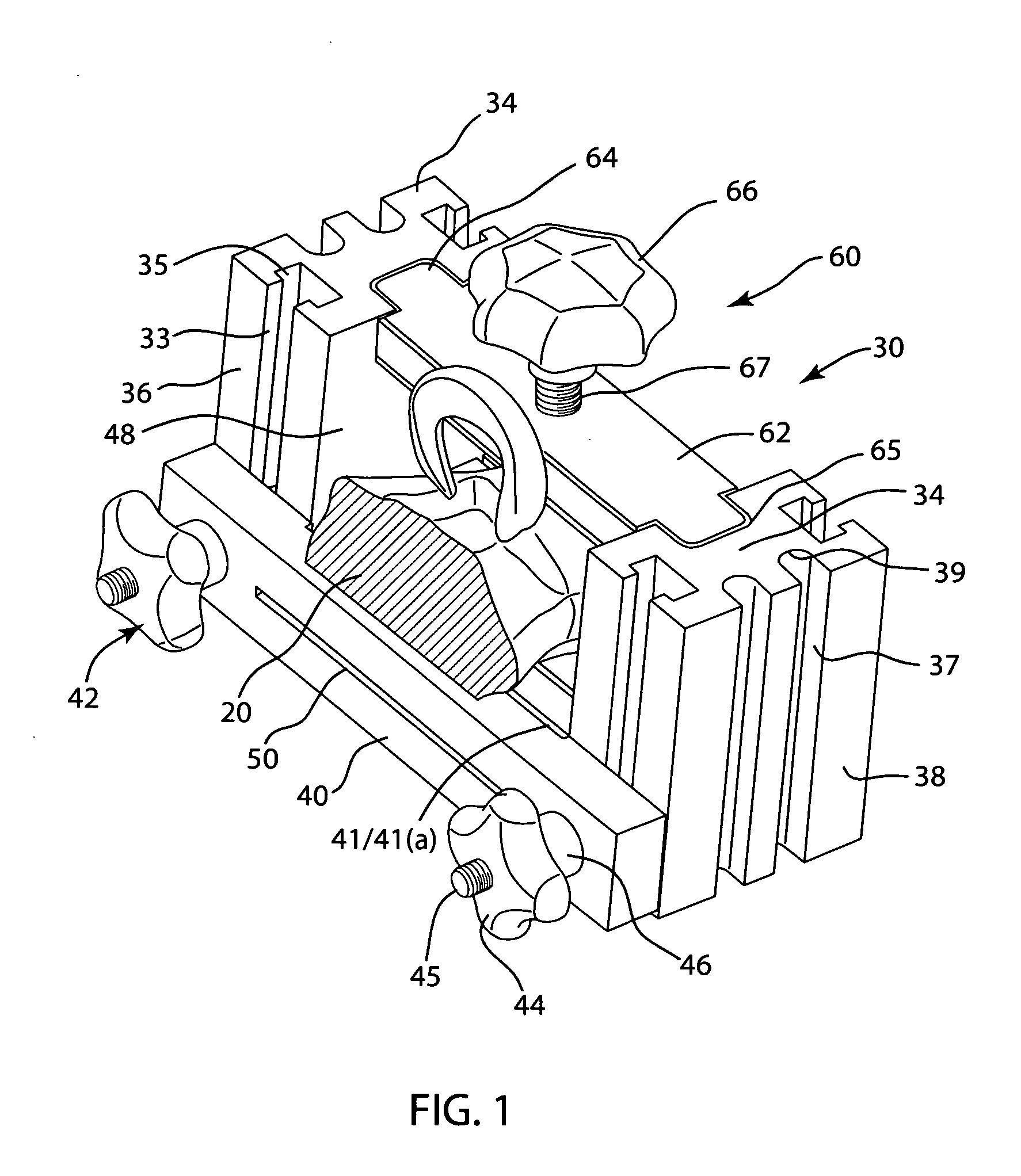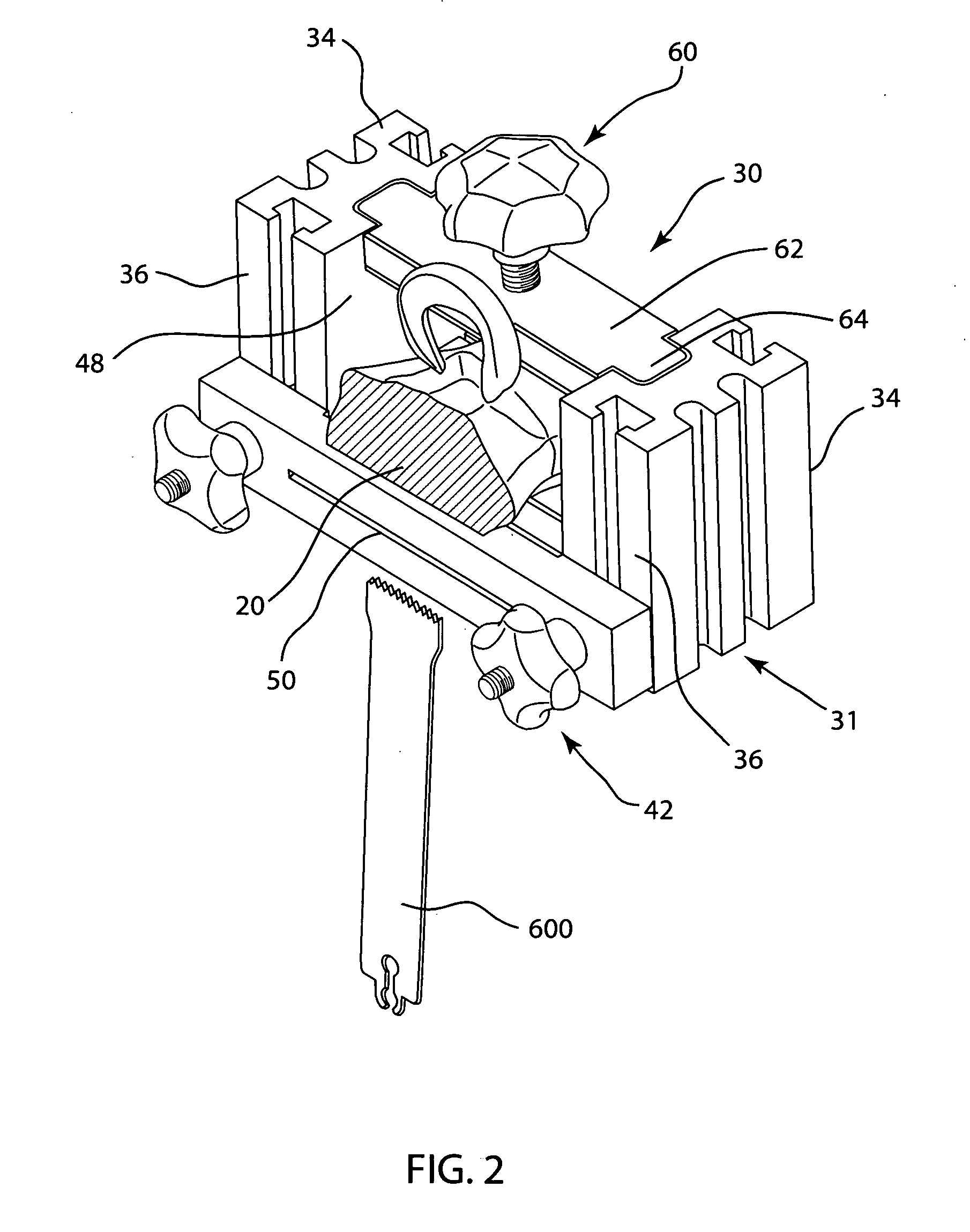Instrumentation for repair of meniscus tissue
a meniscus and instrumentation technology, applied in the field of human knee joint injury treatment, can solve the problems of limiting mobility, reducing knee stability and knee locking, and consequently losing function, and achieve the effect of allowing maximum flexibility
- Summary
- Abstract
- Description
- Claims
- Application Information
AI Technical Summary
Benefits of technology
Problems solved by technology
Method used
Image
Examples
Embodiment Construction
[0055]The preferred embodiment and best mode of the present invention is shown in FIGS. 10 through 21.
[0056]In the drawings, an allograft meniscus implant 20 with a bone base 22 and meniscus 24 is shown. The implant bone base 22 after having been cut, trimmed and measured as shown in FIG. 25, is mounted in groove 202 of tibia 200 shown in FIG. 24.
[0057]The feature of the bone base 22 of the implant that makes it desirable as a surgical material is its ability to slowly resorb and be integrated into the groove space on the tibia it occupies while allowing the bodies own healing mechanism to restore the repairing bone to its natural shape and function by a mechanism known in the art as creeping substitution.
[0058]The allograft meniscus implant 20 is prepared with the use of an instrument kit comprising a cutter workstation assembly 30 which allows the meniscus implant base 22 to be cut, trimmed and sized, a rasp assembly 70, an osteotome or tissue chisel 80 and a clamping drill 90.
[00...
PUM
 Login to View More
Login to View More Abstract
Description
Claims
Application Information
 Login to View More
Login to View More - R&D
- Intellectual Property
- Life Sciences
- Materials
- Tech Scout
- Unparalleled Data Quality
- Higher Quality Content
- 60% Fewer Hallucinations
Browse by: Latest US Patents, China's latest patents, Technical Efficacy Thesaurus, Application Domain, Technology Topic, Popular Technical Reports.
© 2025 PatSnap. All rights reserved.Legal|Privacy policy|Modern Slavery Act Transparency Statement|Sitemap|About US| Contact US: help@patsnap.com



